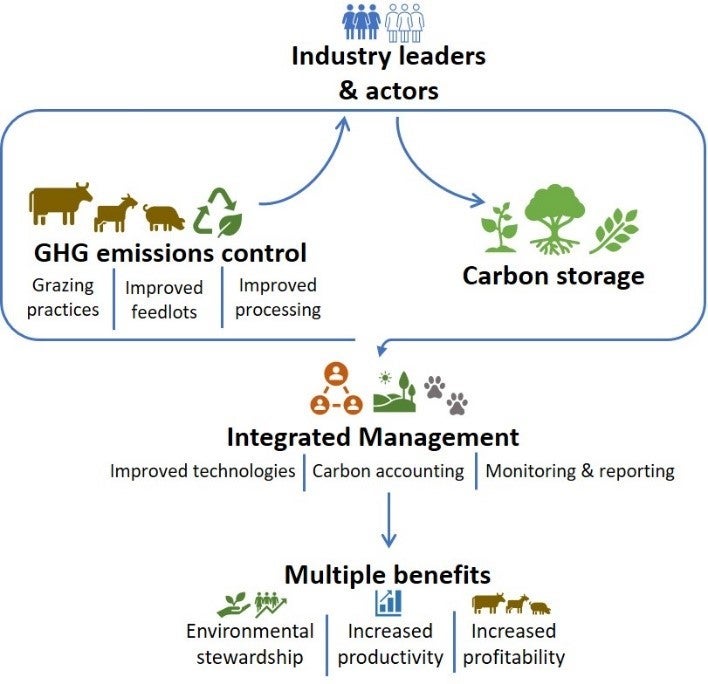Botswana and Namibia are two of the world’s most drought-prone countries. In 2018-2019, a severe drought swept through Namibia killing some 60,000 heads of livestock and causing two-thirds of crops to fail, leaving a third of Namibians without adequate food. In this alarming setting, the agriculture sector is left acutely exposed to climate-related risk, with livestock as its most critically affected subsector. Even setting aside extreme events, some 40% of livestock in Botswana and 43%in Namibia are directly affected by climate change in general.
In Botswana and Namibia, livestock constitute a relevant economic sector, representing, respectively, 80 and 70% of the national agriculture sector. Additionally, livestock is a relevant driver towards social sustainability and food security. Animals participate in the household economy in a range of ways, from every-day work like traction, to securing collateral, sustained income, and thus livelihood; and they provide a formidable source of high-quality protein that thus contributes toward food security. However, for livestock to achieve its full development potential, urgent action must be taken to address environmental shortcomings and ramp up the adoption of climate-smart practices towards full sustainability.
The Roadmap for Sustainable Livestock Value Chains in Southern Africa provides a framework for action to strengthen the livestock value chain in Botswana and Namibia. It points to the adaptation of existing practices in resource management and animal husbandry as a highly promising direction in which to achieve scalable impacts, with a regional lens towards integration that will increase competitiveness. As the livestock sectors in both Botswana and Namibia are under serious threat from climate change, both governments have amplified their efforts, introducing strategies to mitigate and adapt, while reducing vulnerability to future shocks. Further increasing climate resilience will rely on bold actions that cut across improved management of natural resources, integrating climate action, and fostering climate-smart business models.

Botswana has already initiated a rangeland management initiative; however, its effectiveness now hinges on strong attention and support at the smallholder level to effectively deploy community-based rangeland management plans that take into account stocking and grazing rates, underpinned by enhanced surveillance programs to monitor cattle and wildlife movements. Namibia has already amplified its efforts to introduce strategies and actions to enable the livestock stakeholders to adapt and reduce vulnerability to future climate shocks, thus instilling resilience into the livestock sector. However, urgent action is needed to address the impact on productivity losses in the beef industry, mainly by halting and reversing rangeland degradation, which calls for an integrated approach, piloting programs on integrated crop-livestock system, circular economy and conservation agriculture practices.
In both countries, clear regulatory frameworks, community engagement mechanisms and communication channels will support the establishment and enforcement of relevant national plans, such as a communal grazing plans, fostering a sound enabling environment that promotes climate-smart businesses.
As livestock takes a leading role in delivering healthier diets and stable livelihoods, moving towards a sustainable and resilient sector becomes an imperative in Botswana and Namibia. This is a challenge that calls for regional integration to leverage shared human and physical capital and, overall, provide a cohesive and coordinated framework for the development of a climate-smart livestock value chain. Innovative, synergistic and collaborative approaches are needed for livestock to become a development force, and the time to explore them is now.
This blog is second in a series on the intersection between public health and the health of the livestock, as vital to wellness, livelihoods and prosperous communities. Read more in the first blog, Healthy humans, animals and ecosystems – One Health in Eastern and Southern Africa.



Join the Conversation